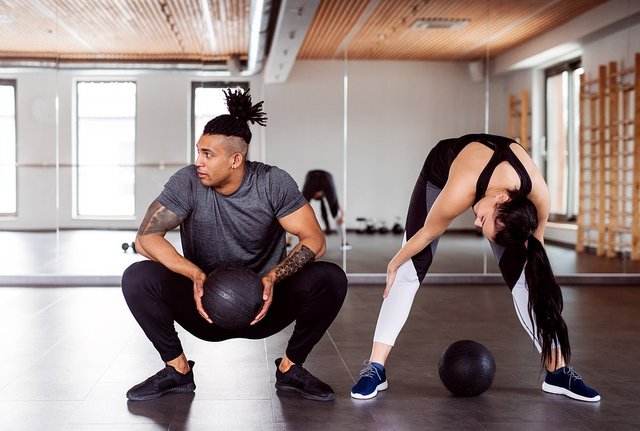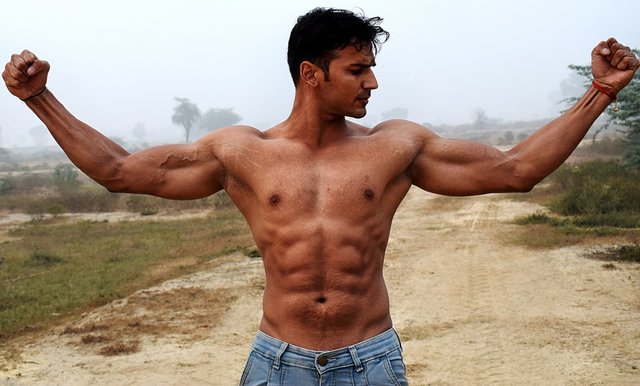The Fundamentals of Training PT.4 (Training Theories & Effects)

• Previous post
• PT.1
Table of contents
- Generalized theories of training
a. One-factor theory (theory of supercompensation)
b. Two-factor theory (fitness-fatigue theory) - Training effects
- Highlights
1. Generalized theories of training

Generalized training theories are simple models or frameworks a coach uses to train their athletes or trainees.
Whether you are an athlete or a fitness trainee, a framework helps me periodize your training load along a macrocycle.
There are commonly three components of any periodization: macrocycle (usually years), mesocycle (usually months) and microcycles (usually weeks). For the sake of simplicity, you as a fitness trainee can call them just blocks (small, medium, large).
a. One-factor theory (theory of supercompensation)

First put forth by Russian scientist Nikolai N. Yakovlev (1911–1992) in 1949-1959, this theory is a basic principle of athletic training.
In sports science theory, supercompensation is the post training period during which the trained function/parameter has a higher performance capacity than it did prior to the training period.
In this theory, the immediate effect of a workout is considered as a depletion of certain biochemical substances due to strenuous exercises. After a restoration period, the level of prior substance increase above the initial level (supercompensation).
If the rest intervals between consecutive workouts are the right length, and if the next training session coincides in time with the supercompensation phase, your preparedness advances.
However, things become more complex because training affects many of your different bodily functions and parameters.
Each bodily function or parameter has a different recovery time, a different amount of time needed to reach peak supercompensation, a different amount of time between supercompensation peak and return to your base fitness.
You will require different approaches with different resting times depending on the oscillation of your macrocycle (volume vs intensity).
b. Two-factor theory (fitness-fatigue theory)

More sophisticated than the supercompensation theory, this theory states that your preparedness doesn’t stay the same the same but varies overtime.
According to the two-factor model, the immediate training effects after a workout are a combination of two processes:
• Gain in fitness prompted by the workout
• Fatigue
After one workout, your preparedness:
• Ameliorates due to fitness gain, but
• Deteriorates because of fatigue
Fatigue always has a negative effect on your performance. The larger the workload, the more fatigue you will feel. However, the higher your work capacity, though, the less fatigue you will experience.
Therefore, it is impossible to completely isolate performance to the combination of fitness and fatigue. Nonetheless, their relationship remains one of the strongest determinants of performance.
Prior to the training session, both fitness and fatigue are zero while performance is at base levels. Then, the training impulse elicits a fitness response that increases your performance, and a fatigue response that decreases your performance.
The fitness gain is supposed to be moderate in magnitude but long lasting. Conversely, the fatigue effect is greater in magnitude but shorter in duration (conventionally three times shorter for average training loads).
Furthermore, because the negative effect of fatigue drops faster than the positive effect of fitness, fitness eventually outweighs fatigue. Ideally, performance would continue increasing with fitness over time, while fatigue would keep fluctuating without any net gain.
However, things are not always going to be that simple. As we advance in training age, the push to drive progress often results in the accumulation of residual stress. Conversely, there will be times when we might have to markedly reduce training or cease it altogether.
2. Training effects

Finally, there are 6 types of effects within the body as a result of training:
- Acute effects, the ones that happen during exercise
- Immediate effects, manifested soon after the workout
- Cumulative effects, as a result of continued training sessions or even years of training
- Delayed effects (chronic), manifested over a given time after a performed training routine
- Partial effects, produced by a single training (e.g., deadlift)
- Residual effects, defined as the retention of changes after the cessation of training beyond time periods during which adaptations can take place
Highlights
- Use a framework that works for you – although it seems that the most updated one is the two-factor theory - , whether you are a coach or someone that’s only starting. Have in mind that sustainable results can only be achieved by structured and well-planned habit. Intuition will do the rest.
- There are 6 types of training effects. Identify and use them to calibrate the effectiveness of your workout regime.
This is the end of the “Fundamentals of Training Series”. Hope I was able to shed some light on your workout knowledge.
What do you think?
If you are an ambitious professional or entrepreneur looking to get in shape, click here
Bibliography:
- (n.d.). Adaptation - Wikipedia. Retrieved from https://en.m.wikipedia.org/wiki/Adaptation
- (n.d.). Progressive Overload – HSC PDHPE. Retrieved from https://www.pdhpe.net/factors-affecting-performance/how-does-training-affect-performance/principles-of-training/progressive-overload/
- (n.d.). Sports periodization - Wikipedia. Retrieved from https://en.wikipedia.org/wiki/Sports_periodization
- (n.d.). Scientific Principles of Strength Training - Juggernaut Training Systems. Retrieved from https://www.jtsstrength.com/scientific-principles-strength-training/
- (n.d.). The Principles of Training | S-cool, the revision website. Retrieved from https://www.s-cool.co.uk/gcse/pe/training-for-sport/revise-it/the-principles-of-training
- (n.d.). Scientific Exercise Training Principles. Retrieved from https://www.verywellfit.com/the-6-scientific-rules-you-must-follow-to-get-fit-3120111
- (n.d.). 7 Principles of Exercise and Sport Training. Retrieved from https://www.teamusa.org/USA-Triathlon/News/Blogs/Multisport-Lab/2012/August/28/7-Principles-of-Exercise-and-Sport-Training
- (n.d.). Principles of Training – HSC PDHPE. Retrieved from https://www.pdhpe.net/factors-affecting-performance/how-does-training-affect-performance/principles-of-training/
- (n.d.). The Four Principles Of Training | realbuzz.com. Retrieved from https://www.realbuzz.com/articles-interests/fitness/article/the-four-principles-of-training/
- (n.d.). Principles of training - Edexcel - Revision 1 - GCSE Physical Education - BBC Bitesize. Retrieved from https://www.bbc.co.uk/bitesize/guides/zxhxnbk/revision/1
- (n.d.). Principles of Training - TeachPE.com. Retrieved from https://www.teachpe.com/training-fitness/principles-of-training
- (n.d.). The 5 Principles of Training: Why We Do What We Do. Retrieved from https://business.fit/5-principles-training/
- (n.d.). Supercompensation - Wikipedia. Retrieved from https://en.wikipedia.org/wiki/Supercompensation
- (n.d.). Dual Factor Theory: The Fitness-Fatigue Model - Giovanni Baldi. Retrieved from https://www.giovannibaldi.com/dual-factor-theory/
- (n.d.). What Is the Fitness Fatigue Model? Retrieved from https://spotmebro.com/training/what-is-the-fitness-fatigue-model/
This is a curated post made from different sources. The health information here is provided as resource only and is not to be used or relied on for any diagnostic or treatment purposes, nor intended to be medical education, nor creating any client-coach relationship, and should not be used as a substitute for professional diagnosis and treatment. Always do your own research and consult your health care provider before making any healthcare decisions, for guidance about a specific medical condition or fitness purposes. Edward Casanova shall have no liability, for any damages, loss, injury, or liability whatsoever suffered as a result of your reliance on the information contained in this site.
Congratulations @zen.fit! You have completed the following achievement on the Steem blockchain and have been rewarded with new badge(s) :
You can view your badges on your Steem Board and compare to others on the Steem Ranking
If you no longer want to receive notifications, reply to this comment with the word
STOPTo support your work, I also upvoted your post!
Vote for @Steemitboard as a witness to get one more award and increased upvotes!